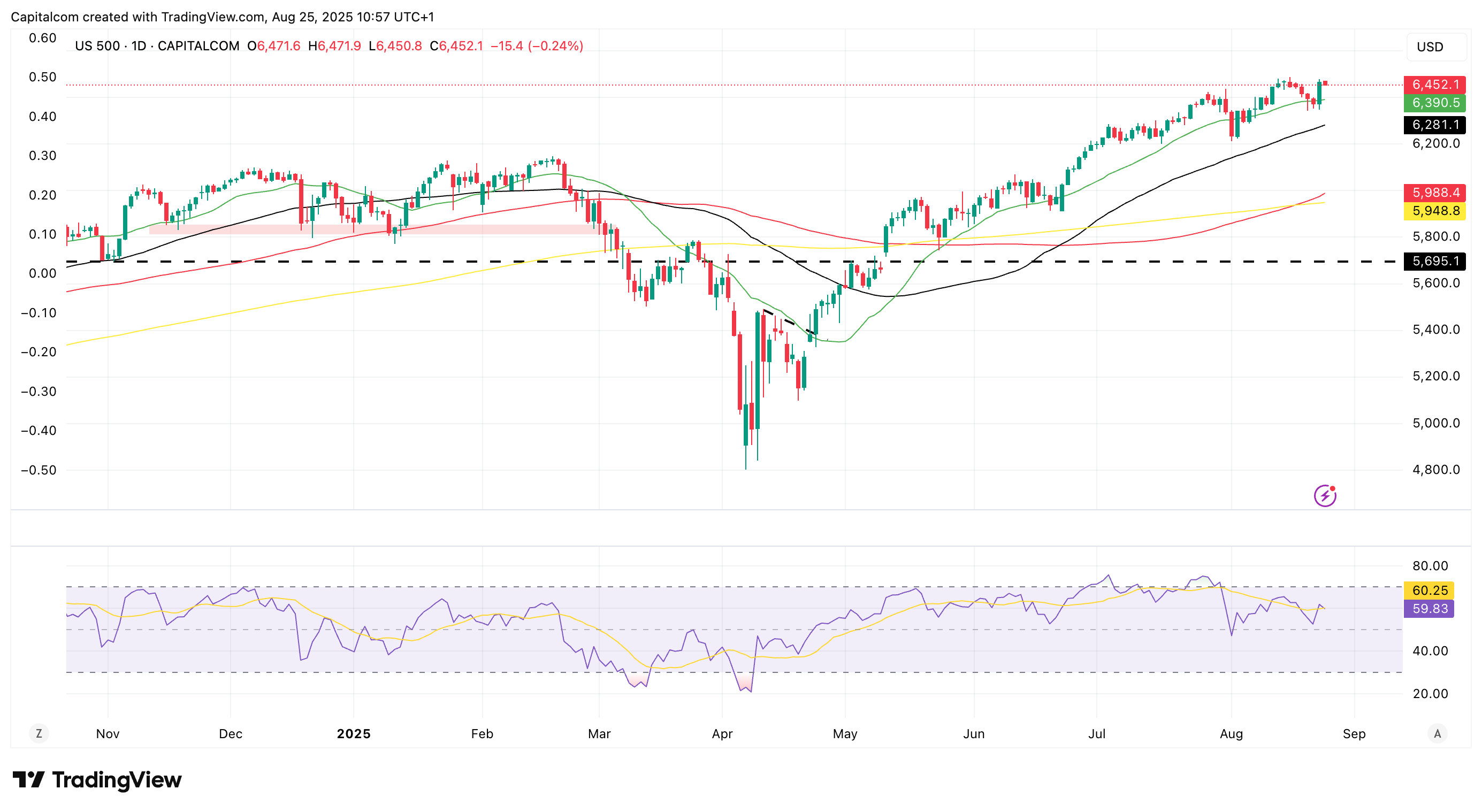Market Mondays: Equities rally on dovish Powell speech, US PCE in focus
Global equities cheer on Powell's dovish speech at Jackson Hole as focus shifts to the US PCE data to confirm rate cuts can go ahead
Federal Reserve Chair Jerome Powell’s much-anticipated speech at the Jackson Hole Symposium on Friday night was received warmly by financial markets. His comments signalled a dovish tilt in the Fed’s stance, reinforcing expectations that interest rate cuts could be on the horizon as early as September.
Key takeaways from Powell’s speech
The overarching theme of Powell’s remarks was a shift in the Fed’s focus toward risks in the labour market. He acknowledged that “downside risks to employment are rising” and emphasized that, with policy already in restrictive territory, the balance of risks may now warrant an adjustment.
Markets interpreted this as a strong indication that the Fed is preparing to cut rates. Immediately after the speech, futures pricing reflected an 85% probability of a September rate cut, up sharply from around 65% beforehand.
The dovish messaging ignited a rally across asset classes: U.S. Treasury yields fell, the dollar weakened, and equities surged. The dollar, which had previously benefitted from U.S. exceptionalism, now faces renewed downside pressure as markets price in looser policy.
The immediate reaction was broad-based enthusiasm. U.S. stocks rallied into the weekend, with the S&P 500 hovering just below record highs and the Dow Jones Industrial Average breaking through to new peaks. The NASDAQ, however, remains a few percent below its highs, reflecting an ongoing rotation out of tech and into cyclical sectors such as financials and consumer discretionary.
This dynamic wasn’t limited to the U.S.—European and Australian indices also touched record levels, highlighting global optimism about a less restrictive policy environment.
S&P 500 daily chart

Past performance is not a reliable indicator of future results.
Inflation, tariffs, and the Fed’s confidence
Powell also addressed concerns about tariffs and inflation, noting that any upward pressure from tariffs would likely be “relatively short-lived” and amount to a one-time shift in price levels. This perspective reassured markets that tariffs do not pose a sustained inflation threat—another justification for rate cuts.
Still, questions remain. While Powell spoke for the Fed, some doubt lingers about whether the broader Federal Open Market Committee (FOMC) fully supports his stance. Minutes from June suggested members were split on easing, and too much dovishness could risk un-anchoring long-term inflation expectations.
Looking ahead: data dependence
While markets are pricing in September cuts as a near certainty, further easing will depend heavily on incoming data. Key upcoming releases include:
- PCE Inflation (this Friday): Expected to show a modest uptick to 2.9%. Markets appear comfortable with this, as Powell flagged tolerance for short-term price increases. However, a figure with a “3-handle” could rattle confidence.
- Nonfarm Payrolls (next week): Labor market data will be crucial in validating Powell’s concerns about rising employment risks.
- Producer Price Index (PPI): The recent hotter-than-expected PPI reading suggested possible inflation persistence through the supply chain.
Current market pricing implies one 25-basis-point cut in September, with potential follow-up cuts in October and December. However, chatter of a “jumbo” 50-basis-point cut has faded, as investors recognize such a move is unlikely unless the economy weakens drastically.
Balancing growth and inflation
The Fed’s latest Summary of Economic Projections (SEP) suggested tolerance for core PCE inflation up to 3.1% by the end of 2025 while still allowing for rate cuts. This reflects the Fed’s growing emphasis on supporting the labour market and broader economic stability, even at the risk of temporarily overshooting inflation targets.
Flash PMI surveys last week added nuance, showing solid employment gains in both services and manufacturing, though also hinting at persistent price pressures. This underscores the delicate balancing act the Fed faces: cutting rates enough to support growth without reigniting inflation expectations.
Conclusion
Powell’s Jackson Hole speech marked a turning point for markets, affirming that the Fed is ready to ease policy as labour market risks rise. The dovish tone boosted risk appetite globally, pushing stocks higher, bonds stronger, and the dollar weaker.
The next few weeks of economic data will determine whether this optimism is sustained. For now, markets are betting that September’s rate cut is all but guaranteed, with the focus shifting to how much further the Fed is willing to go.